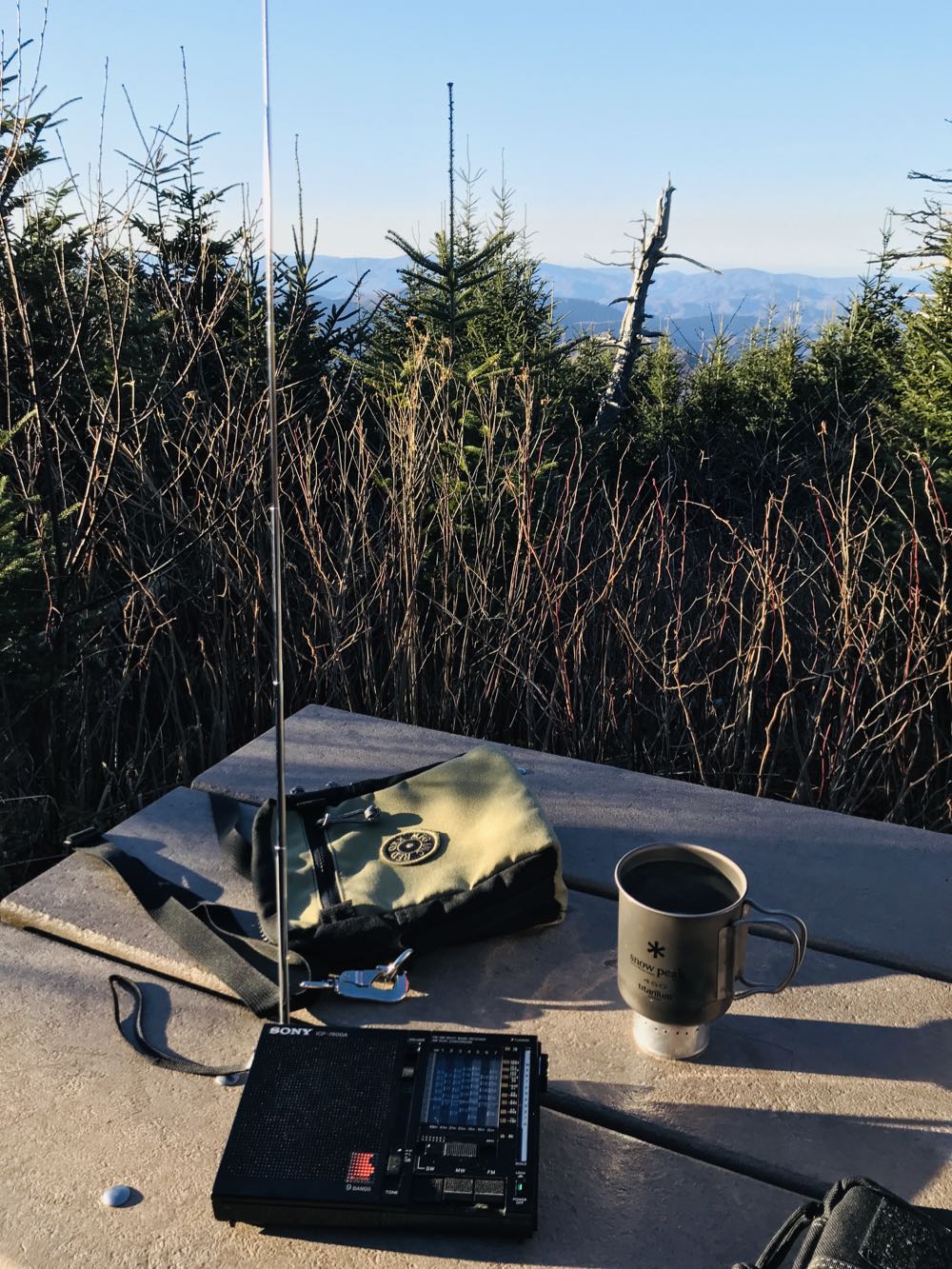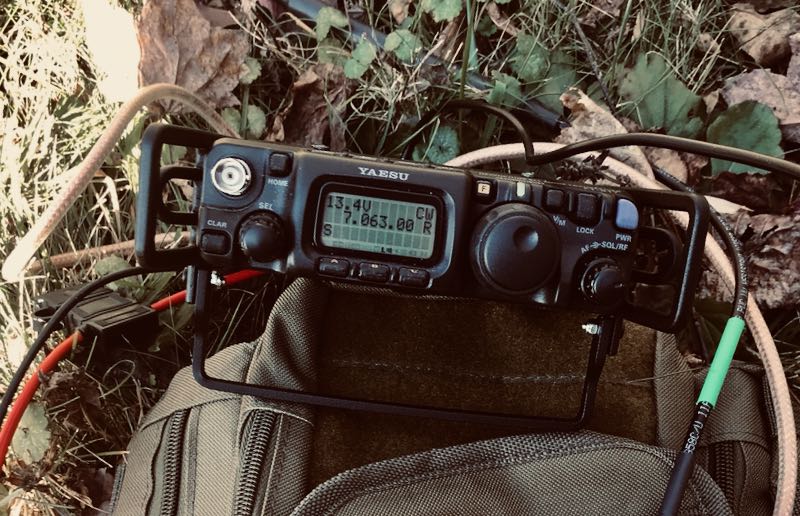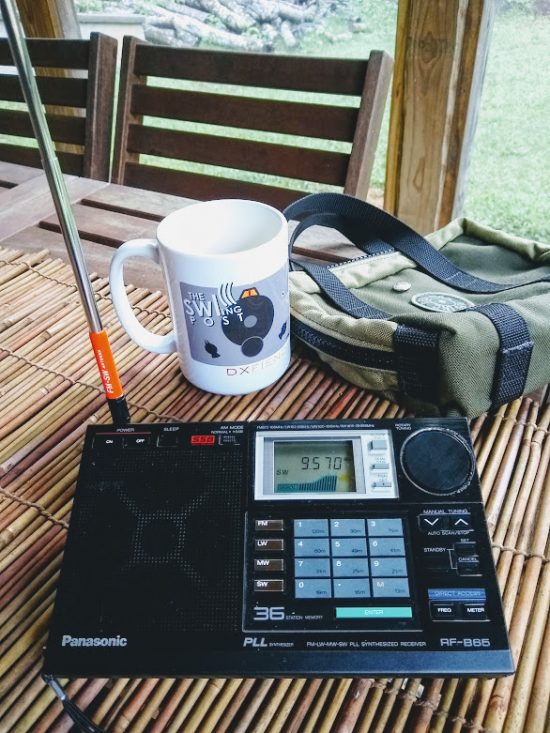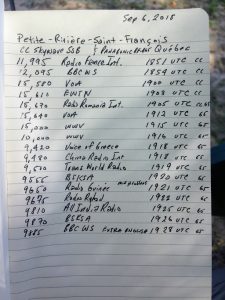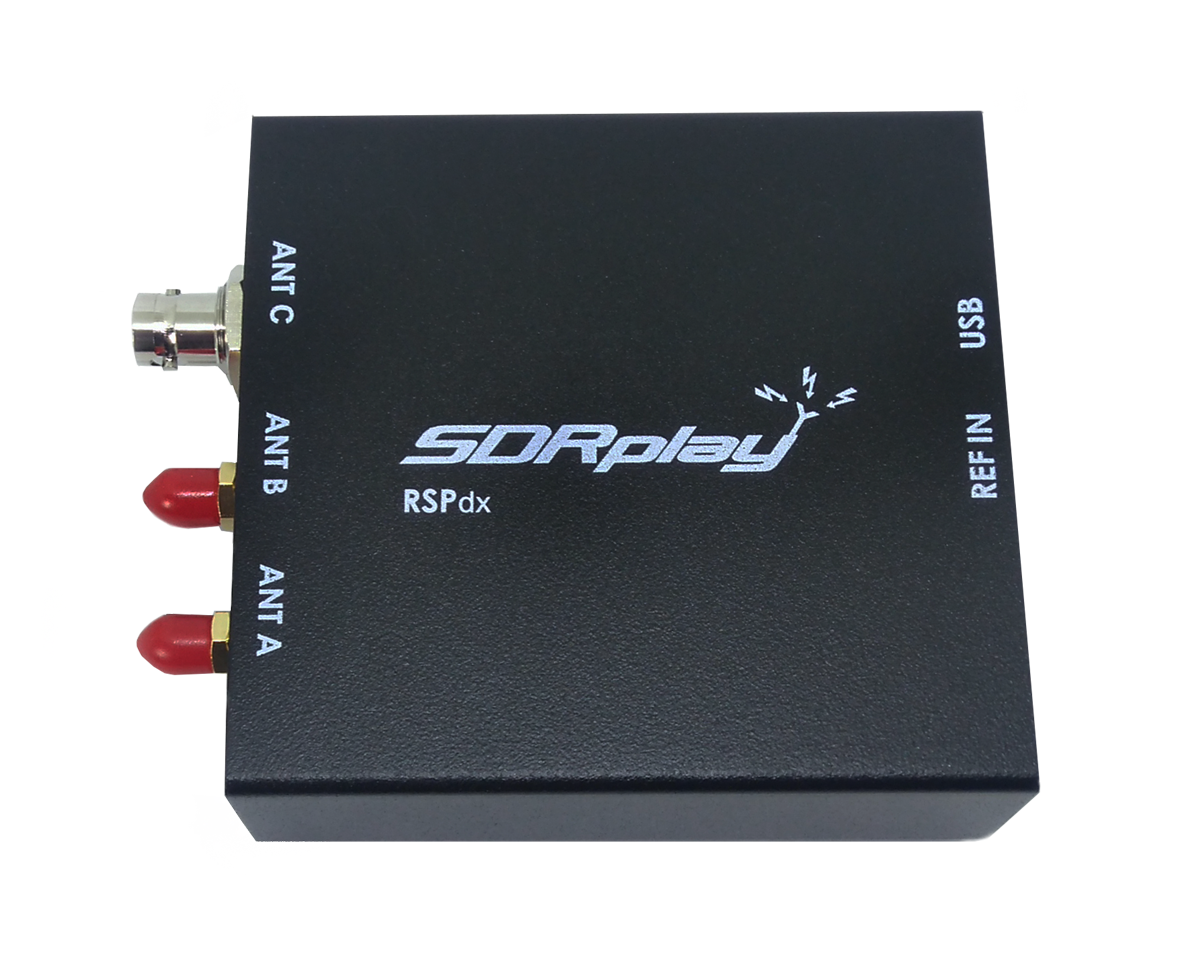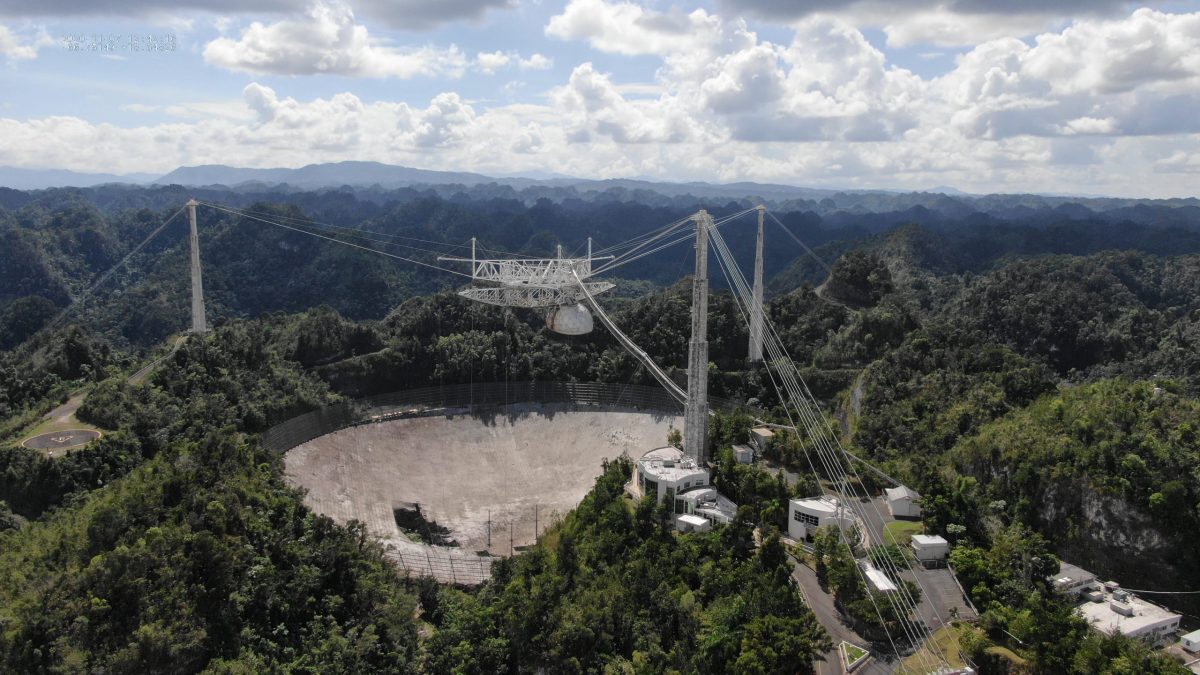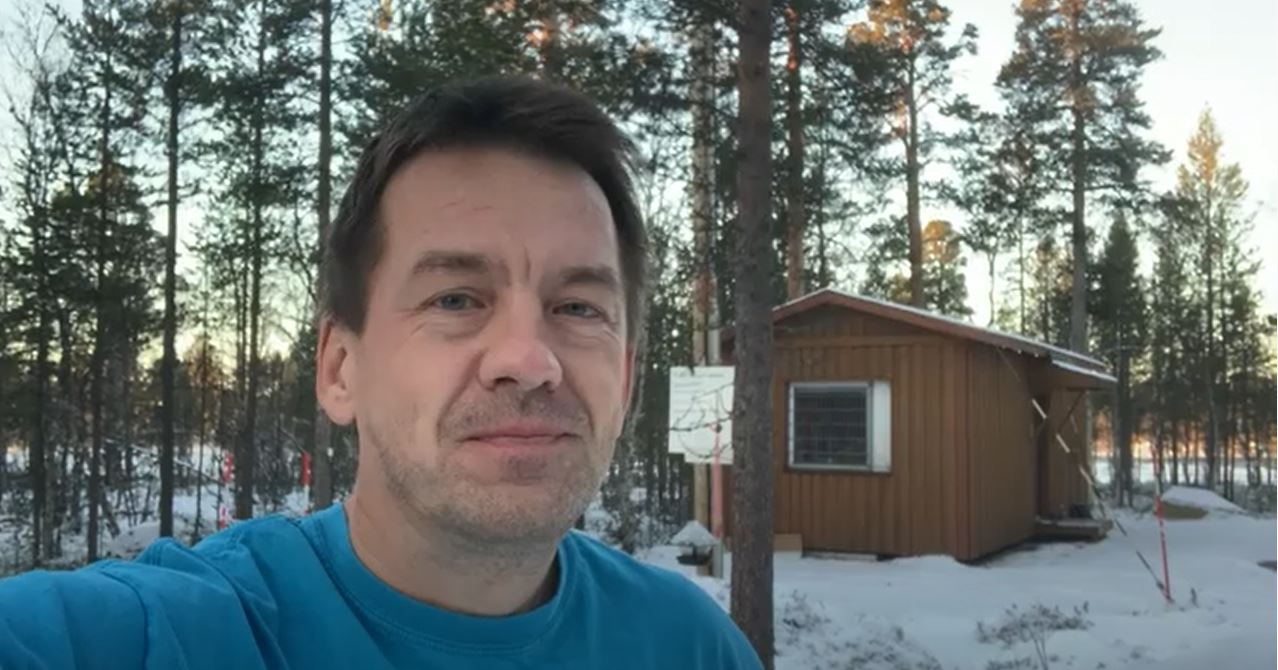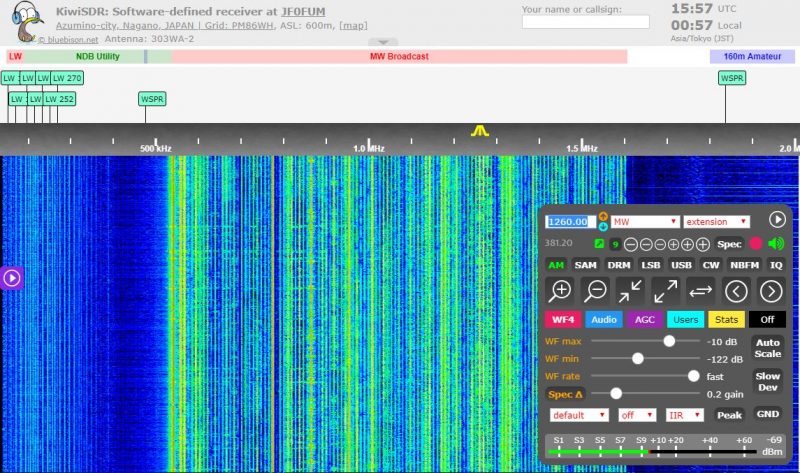Many thanks to SWLing Post contributor, David Shannon, who shares a link to a transcript on the UK Parliament website and notes that “it’s not often” the topic of CMEs comes up in the House of Commons. (We have discussed them here, of course.)
Here’s the transcript taken from the UK Parliament website:
Paul Maynard (Blackpool North and Cleveleys) (Con)
It is a pleasure to rise for my first Adjournment debate in many years—once a decade perhaps.
I am a little concerned that people might think that I am trying to be the new Lembit Öpik of this Parliament, in that he was famously obsessed with asteroid impacts that never occurred. Equally, people might think I have been spending far too much time during lockdown watching boxsets, such as “Cobra” on Sky Atlantic, which I was wholly unaware of until I watched an episode this weekend. I assure the House that it had no impact at all on me picking this particular topic.
People might wonder what on earth I am on about. What is a solar flare? A solar flare, also known as space weather or coronal mass ejection, is an event that has the potential to knock out our electricity grid by causing voltage instability, power transmission network instabilities and transformer burnouts. A modest one in Quebec in 1989 did just that for a few hours to the Hydro Québec grid.
A bigger solar flare is likely to be around the corner, even if we do not know when. The last so-called biggie was in 1859, called the Carrington event. That was a very different era, with fewer consequences. Events with limited impacts have occurred throughout the past 100 years, but as we become more reliant on technology, they have an impact on navigation systems, aviation and satellites, increasingly. As with Los Angeles atop the San Andreas fault, another episode is both expected and unavoidable.
It is important to prepare, and with the knowledge that we will have very little warning that such a solar flare is occurring before we suffer the consequences. Government say that we are the best prepared in the world but, without being unkind to them at the moment, those are the precise words used of our pandemic preparations. It is therefore worth exploring in greater detail whether we are truly prepared for any solar flare, let alone the right sort of solar flare. The concern in the UK is that, while there was some pandemic preparation, it was for the wrong sort of virus.
The Civil Contingencies Unit might be able to maintain the national strategic stockpile of body bags. The NHS might well have tried to foresee every strain of virus, and ensure that vaccines were available, but the collision of plans with reality is always the point at which flaws are revealed. I do not mean that we should be looking at websites for survivalists and preppers, or stocking up on tinned food—we have had enough panic buying this year. However, we should consider those risks that the scientific community believes to be worth mitigating.
It is fair to ask how far the Government have progressed since the 2015 space weather preparedness strategy. As good as it is to know that solar flares are on someone’s radar somewhere in Whitehall, some of its relaxed conclusions may need re-testing. For example, the document rather blithely states:
“Some of this resilience is not the result of planning for this risk but good fortune.”
It gives me slight pause for thought that we are relying on good fortune to see us through future space weather. ?
To me, the golden thread stretches from the Met Office alerting the Government to the imminence of a solar flare, to the National Grid then having a limited period of time—if any—to implement mitigating measures.Jim Shannon (Strangford) (DUP)
The hon. Gentleman’s coastal region has the potential to suffer the same problems from solar flares as my coastal region, and I am pleased that he has brought this forward for the House’s consideration. Is he aware that coastal and more rural areas like both of ours would be worst hit? We need to ensure that we are not left languishing, waiting for replacement transformers. Does he further agree that planning should include specifics for coastal areas in particular?
Paul Maynard
I was fascinated to see how the hon. Gentleman would respond to the challenge of this topic in an Adjournment debate and he has surpassed my expectations. I urge him to speak to EirGrid, which is the grid that covers Ireland. I am sure it will be interested in explaining to him what actions it is taking. But there are issues we have to consider. The 2015 space weather preparedness strategy indicates that the nearest radiation monitor to the UK is in Belgium. Can the Minister confirm whether that remains the case, and whether our decision to pull out of all EU agencies in any way jeopardises our access? Either way, what steps have been taken to develop sovereign capability in that regard? When was the last Met Office review of warning systems for space weather, and what role would he anticipate for the UK Space Agency?
The British Geological Survey has three operational magnetic observatories. Can the Minister confirm that that remains the case, and explain how resilient they are in and of themselves to space weather? The 2015 review described a number of priorities for future investment. Can the Minister update the House on what publicly funded research has now commenced on space weather, as per the strategy? Can he update me further on what progress has been made in working with international partners?
The Government’s 2015 report stated
“the GB power grid network is highly meshed and has a great deal of built in redundancy. This potentially makes it less susceptible to space weather effects than power grids in some other countries. Over recent years a more resilient design for new transformers has been used to provide further mitigation.”
That is all very positive, you might think, but a 2013 report by the Royal Academy of Engineering painted a slightly different picture:
“Since the last peak of the solar cycle, the Great Britain transmission system has developed to become more meshed and more heavily loaded. It now has a greater dependence on reactive compensation equipment such as static variable compensators and mechanically switched capacitors for ensuring robust voltage control. Thus there is increased probability of severe geomagnetic storms affecting transmission equipment critical to robust operation of the system.”
That is a little less positive.
Right now, National Grid seems to be focusing on hanging on to its role as the electricity system operator, as well as balancing expanding offshore wind farms and building interconnectors to them. Does it have the bandwidth that it needs to keep checking whether its network of transformers can withstand an event of space weather? Back in 2015, it calculated that some ?13 transformers were at risk, and the likes of the US are stockpiling back-up transformers. National Grid is supposed to have spare transformers, but it is not clear how many. If we were to need more, do we even have the industrial capacity to build them, notwithstanding the eight to 12-week lead-in time, and the need to transport them by road to their destination? What more can Government do to assist increasingly commercially oriented companies such as National Grid in this regard, and what progress has been made on developing transportable recovery transformers, as was suggested as far back as 2013? What progress does the Minister believe National Grid is making on installing such mitigating inventions as series capacitors and neutral current blocking devices? Interconnectors are a good thing in themselves. They are also direct current equipment, and as such are not affected. However, during a solar flare, they may be affected, because the convertors to alternating current at either end will come under risk. As we develop ever more interconnectors, what steps is the Department for Business, Energy and Industrial Strategy taking to ensure that those new interconnectors are made as resilient as they can be? Crucially, can I ask when the last national risk assessment update was conducted by the Government?
Some dangers never come to pass—Y2K passed without incident—but just occasionally, I believe it is worth posing the question “What if?” and not just trusting that it will all be fine, because that is the answer we want to hear and the alternative is perhaps far too unpalatable. Covid-19 teaches us many lessons about preparing for worst-case scenarios, and making sure that we assess all possible outcomes must surely be one of the key lessons that we learn. I look forward to learning what the Minister has to say.
The Minister for Business, Energy and Clean Growth (Kwasi Kwarteng)
I was very interested to hear the speech by my hon. Friend the Member for Blackpool North and Cleveleys (Paul Maynard). He mentioned solar flares, and the fact that in the 19th century, people were very conscious of those solar flares. I would like to remind him, as I am sure he knows, that a whole economic theory about the business cycle relating to solar activity was presented in the 19th century, and there are British economists who are very interested in this subject. As a country generally, we have been very interested in solar activity, so I thank him for raising a subject that is very important. It is not as abstruse or obscure as people might think: the question we are considering is a very serious one.
Those severe space weather events are rare, but when they do occur, they can have a big impact on national infrastructure, as my hon. Friend has suggested. As such, it is—I am sure he will be pleased to hear this—a risk that we take very seriously. Severe space weather was first recognised as a risk in our 2011 national security risk assessment, and the 2017 national risk register of civil emergencies provided the most recent assessment of the likelihood and potential impacts of that risk. This assessment is kept under constant review: it is not something that we simply put away in a drawer once it was written up.
Of course, predicting when severe space weather events can happen is crucial to minimising their impact. I am pleased to reassure my hon. Friend that the UK is a ?world leader in this area, as I suggested in my earlier remarks. The Met Office’s Space Weather Operations Centre is one of only three 24/7 forecasting facilities in the entire world. Its systems are kept under constant review, and we are constantly looking to improve how we can maximise our capacity in this area. In recognition of the importance of these forecasts and the ability to conduct forecasting, in 2019 the Prime Minister announced a £20 million boost for research in this area, which represented a near quadrupling of the amount that we were spending. This funding means that the Met Office will be able to improve both the accuracy of forecasts and its warnings.
I have to say that when my hon. Friend mentioned the three operational magnetic observatories, I was very interested. I did actually do some preparation on that topic, and I am very pleased to say that all three magnetic observatories are operational. They are situated in Shetland, on the Scottish borders and in north Devon, and they greatly enhance our capabilities in this area. They are also extremely resilient to space weather.
My hon. Friend mentioned National Grid. The whole issue of National Grid ESO and National Grid’s relationship to it is something that again is under constant review. It is the subject of some debate in the industry. However that question is answered, I can reassure him that we have a resilient energy system. I was struck by the fact that he mentioned a report from 2013. He and I have been in the House of Commons since 2010, I think, and I hope he does not take it amiss if I say that 2013—certainly in the context of energy—is a very long time ago. We have had a huge increase in the deployment of offshore wind and we have more interconnector capacity. I suggest to him that the capacity and resilience of the system is considerably greater than was the case in 2013. Having said all that, I accept that the risk is serious, and he rightly draws it to my attention. I will take the matter up directly with National Grid and the ESO.
As far as National Grid and the ESO are concerned, they feel that they have instigated a few mitigating measures, including increasing the number of spare transformers so that damaged equipment can be replaced quickly. We have been assured—I can revert to my hon. Friend on this—that there are sufficient spare parts to deal with the reasonable worst-case scenario, and there are plans to deploy this spare capacity. Also, critically, we have to introduce—and they are introducing—a new design of transformers, which will be far more resistant to the effects of space weather that he described.
With respect to interconnectors, my hon. Friend will know that it is a direct current but the transformers transform it to alternating current, and that is an area again where we think we can get added protection from the risks he outlined. We will publish a new space weather strategy next year, which will set out a five-year road map—a five-year vision—for how we intend to boost resilience and build on existing UK strength and capacity in this area. It will also provide what he has asked for: an update on the progress that we have achieved since the 2015 strategy was published.
The long history of close working among the energy industry, thinkers and leaders of thought in the sector and the Government means that we have a good understanding of the risk posed by solar flares to ?the electricity network. We think we have put in place proportionate measures that will mitigate those risks, and I am firmly of the view that the system is highly resilient, but, once again, I am extremely open to ideas from my hon. Friend and from Members across the House—from all quarters—as to how we can improve our resilience and our ability to forecast potential danger in this area.?
I once again thank my hon. Friend for raising this issue. Far from being a flippant or trivial subject for an Adjournment debate, it is my pleasure to respond on a very serious problem. I hope we can assure him that the problem is well scoped and that we have decent mitigations in place.Question put and agreed to.
–House adjourned.–
Thanks for the tip, David. It’s my impression that many power grids across the planet are being upgraded to better handle potential destructive EMPs. Of course, this is an investment into upgrades we hope we never need, thus local/national governments don’t always take the threat seriously.


